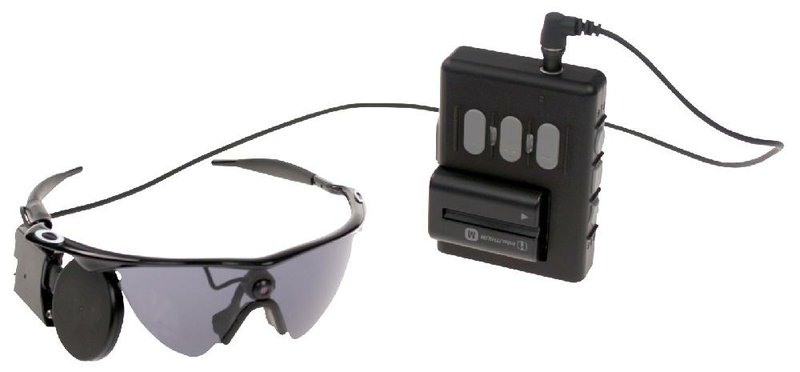LITTLE ROCK — The Food and Drug Administration has approved the first treatment designed to give limited vision to people who are blind, involving a technology called the “artificial retina.”
With it, people with certain types of blindness can detect crosswalks on the street, burners on a stove, the presence of people or cars, and sometimes even over sized numbers or letters.
The artificial retina is a sheet of electrodes surgically implanted in the eye. The patient is also outfitted with a pair of glasses with an attached camera and a portable video processor. These elements together allow visual signals to bypass the damaged portion of the retina and be transmitted to the brain. The FDA approval covers this integrated system, which the manufacturer calls Argus II.
Last week’s approval marks the first milestone in a new frontier in vision research, a field in which scientists are making strides with gene therapy, optogenetics, stem cells and other strategies.
“This is just the beginning,” said Grace Shen, director of the retinal diseases program at the National Eye Institute, which helped finance the artificial retina research and is supporting many other blindness therapy projects. “We have a lot of exciting things sitting in the wings, multiple approaches being developed now to address this.”
With the artificial retina or retinal prosthesis, a blind person cannot see in the conventional sense but can identify outlines and boundaries of objects, especially when there is contrast between light and dark - fireworks against a night sky or black socks mixed with white ones in the laundry.
“Without the system, I wouldn’t be able to see anything at all, and if you were in front of me and you moved left and right, I’m not going to realize any of this,” said Elias Konstantopolous, 74, a retired electrician in Baltimore, one of about 50 Americans and Europeans who have been using the device in clinical trials for several years.
He said it helps him differentiate curbs from asphalt roads and detect contours, but not details, of cars, trees and people.
“When you don’t have nothing, this is something,” Konstantopolous said. “It’s a lot.”
The FDA approved Argus II, made by Second Sight Medical Products, to treat people with severe retinitis pigmentosa, a group of inherited diseases in which photoreceptor cells, which take in light, deteriorate.
The first version of the implant had a sheet of 16 electrodes, but the current version has 60. A tiny camera mounted on eyeglasses captures images, and the video processor, worn on a belt, translates those images into pixelized patterns of light and dark. The processor transmits those signals to the electrodes, which send them along the optic nerve to the brain.
About 100,000 Americans have retinitis pigmentosa, but initially between 10,000 and 15,000 will likely qualify for the Argus II, according to the company. The FDA says that up to 4,000 people a year can be treated with the device. That number represents people who are older than 25, who once had useful vision, have evidence of an intact inner retinal layer, have at best very limited light perception in the retina and are so visually impaired that the device would provide an improvement. Second Sight will begin making Argus II available later this year.
But experts said the technology holds promise for other people who are blind, especially those with advanced age-related macular degeneration, the major cause of vision loss in older people, affecting about 2 million Americans. About 50,000 of them are currently severely impaired enough that the artificial retina would be helpful, said Dr. Robert Greenberg, Second Sight’s president and chief executive.
In Europe, Argus II received approval in 2011 to treat a broader group of people, those with severe blindness caused by any type of outer retinal degeneration, not just retinitis pigmentosa, although it is currently only marketed in Europe for that condition. In the United States, additional clinical trials need to be completed before the company can seek broader FDA approval.
Eventually, Greenberg said, the plan is to implant electrodes not in the eye but directly into the brain’s visual cortex.
“That would allow us to address blindness from all causes,” he said.
Initially, the artificial retina will be available at seven hospitals in five states: New York, California, Texas, Maryland and Pennsylvania. It will cost about $150,000, not including the surgery and training sessions to use the device. Second Sight said it was optimistic that insurance would cover it.
Developed over 20 years by Dr. Mark S. Humayun, an ophthalmologist and biomedical engineer at the University of Southern California’s Doheny Retinal Institute, the artificial retina was inspired by cochlear implants for the deaf. Some financing came from a cochlear implant maker and other private sources, but about $100 million was provided by the National Eye Institute, the National Science Foundation and the Department of Energy, all federal agencies.
The Argus II has had relatively few safety problems, mostly post surgical infections and occasional erosions of a thin layer in the eye that covered the implant. Those problems have been addressed, Greenberg said, and only two people needed to have the implant removed. An FDA advisory panel voted unanimously in September to recommend approval, finding that benefits outweighed the risks.
Humayun said he envisioned applying the technology to other conditions than blindness, implanting electrodes in other parts of the body to address bladder control problems, perhaps, or spinal paralysis.
“We don’t think of the human body as an electrical grid, but it runs off electrical impulses,” he said.
Business, Pages 23 on 02/18/2013
